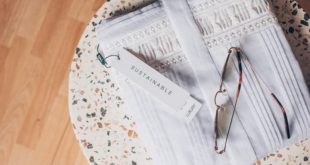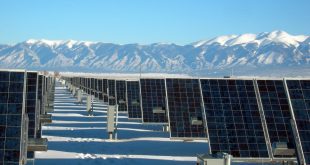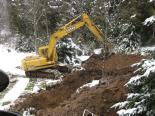Steve D Evans asked:
How does geothermal energy work is a good question, and one which I have often been asked. In this article I must first explain what it is, and then how it can be made to work for man.
Geothermal energy is, literally, the heat of the earth. The heat itself derives from radioactive decay beneath the earth’s surface and, in certain locations, it is concentrated enough and is close enough to surface waters to be brought to the surface by local geological features.
Geo-energy was once thought of as nothing but a thing to wonder at, but it is thought of very differently, now, and is considered by many as one of the most promising forms of renewable energy. It is a renewable energy source because the hot water which conveys it is replenished by rainfall and the heat it brings with it is continuously produced inside the earth.
The great thing about it is that as a form of energy it is versatile and reliable and it produces electricity which generally produces none of the greenhouse gases associated with the combustion of fossil fuels.
So, geothermal energy is the power which can be generated by the harnessing of the heat beneath the Earth’s surface. Deep wells are usually used to pipe steam and hot water from deep within the Earth, up to the surface.
Geothermal heat comes from the magma in the earth’s core, and that itself is heated by the radioactive decay of uranium, thorium, and potassium present in the core. Geothermal energy is present everywhere beneath the Earth’s surface, although the highest temperature, and thus the most desirable, resources are concentrated in regions of active or geologically young volcanoes.
Though the resource is thermal energy rather than a physical substance such as gold or coal, many aspects of geothermal energy are analogous to characteristics of mineral and fossil-fuel resources.
Geothermal energy works for us when, for example, is used as to warm the water in fishing farms. The water is heated, and the warmth makes it more possible for alligators, tropical fish, and other types of fish to grow in seasons and places where they wouldn’t normally.
There are some limitations to it as a form of energy. Unfortunately, the best geothermal resources are concentrated in areas of volcanic activity and are not widely distributed. The earth’s centre is a distance of approximately 4000 miles from the surface and is so hot that it is molten, but when the heat does not rise to the surface it is too far to drill down to the center.
When used in a power station geothermal heat from the hot water from the well causes a “secondary fluid” to turn into vapor, which as it expands drives the turbines to produce electricity. Since the technology used in a binary-cycle geothermal power plant is a closed-loop system, nothing is emitted to the atmosphere. After turning the turbine generator, the working fluid is condensed back into liquid, which is repeatedly vaporized by the geothermal heat in a continuing cycle.
Dry steam and flash steam power plants do emit low levels of carbon dioxide, nitric oxide, and sulfur, although reportedly at only roughly 5% of the levels emitted by fossil fuel power plants. However, geothermal plants can be built with emissions-controlling systems that can inject these substances back into the earth, thereby reducing carbon emissions reportedly to less than 0.1% of those from fossil fuel power plants.
Dry steam plants are used when the rock is very hot. They take steam out of fractures in the ground and use it to directly drive a turbine that spins a generator. Flash plants take hot water, usually under pressure and at temperatures over twice the normal boiling point of water, out of the ground. They allow it to boil as it rises to the surface then separates the steam phase in steam/water separators and then run the steam through a turbine. The turbine also turns a generator, and from that comes the electrical power.
Temperatures in the Central Texas hydrothermal aquifers range from about 90 degrees Fahrenheit to 160 degrees F at depths from 500 to 5,000 feet. Historically these waters have seen some application in spas and therapeutic baths, but might also be developed for geothermal winter heating if used with heat pumps.
If you were to ask the average Icelander; “How Does Geothermal Energy Work”. He would probably say; “very reliably” and, “our country shows how it can work very well”.
Iceland takes advantage of its incredible geological structure to use geothermal power to their advantage. Recently, it has been reported that 17% of Iceland’s total electricity production comes from geothermal energy. Iceland has reached uniquely high levels in the utilization of geothermal energy, but the resource could be better utilized globally. Iceland is very lucky when it comes to energy as it gets almost all of the rest of its electricity from Hydro-power dams.
Energy from geothermal sources today has been said to amount to less than 0.1 percent of the global world use.
Currently in the US, the author understands that, only four states generate electricity from geothermal resources. In total, this provides electricity for about 3.7 million people.
Water 4 Gas
 Alternative Energy HQ solar power for homes, wind energy, and bio fuel issues
Alternative Energy HQ solar power for homes, wind energy, and bio fuel issues









